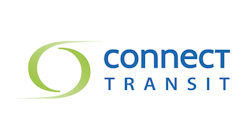When agencies enter into the process of procuring a bus, there are many different factors at work; determining what type of vehicles they are looking to purchase, the method of procurement and what timeline they operate on.
While there are many aspects of the process to keep in mind, agencies and bidders do not enter the process blindly. The American Public Transportation Association (APTA) publishes the Standard Industry Bus Procurement Guidelines—highlighting the considerations that need to be taken into account by agencies pre- and post-procurement. The guidelines include everything from specifications of driver areas, seating and doors.
Patrick Scully, executive vice president sales and marketing, Motor Coach Industries explained that there are three main factors that attribute to a successful procurement.
- Communication
- Transparency and process
- Balanced risk insurance
Working together from start to finish
Isaac Thorne, chief operating officer, Connect Transit said that it was important to communicate to with both manufacturers as well as within your own agencies. “We sat around and decided if we would accept that approved vehicle or deviation. We made the bus manufactures provide us with information as to why they thought that was an approved vehicle. Or with parts, we asked them for specifications as to why that part fit our needs.”
Thorne said that while it was a long process, it was essential. From the bidders standpoint communication insures that there aren’t unrealistic expectations.
“It really starts upfront with an understanding from the customer perspective of their expectation or what they’re buying, time line and other key factors,” said Scully. “That comes ideally through a request for comment or a request for information process where the customer will send out their specifications in advance to potential bidders and ask for comments.”
“That can allow for a status of the industry, allow for open communication and allow for current backlog in the industry. Often time there is a disconnect between what the customer is looking for and what is available, or what sort of timeline,” Scully explained. “That communication process continues through the procurement process, the communication from the agency to the bidders.”
With so many factors to take into account for the procurement process there can be time-lapses within the process. But Scully explained that communication and open conversation during that process is essential as well.
“Transparency and process flows from the communication where it is important that bidders know how a preparing agency works, what their agencies are, what developments they’re looking for, what technical developments and whether they’re looking for a certain delivery date that they’re striving for,” said Scully.
The last factor that Scully explains is balancing the risk insurance.
“The next area is balance risk sharing. Very often from the public sector perspective there a desire to shift risk from the procurement agencies, on to the bidder—which is understandable—but that comes at a cost,” said Scully. “The more risk that is shifted, the more risk that is incurred and added on to the finished cost.”
Combining all aspects is a checklist that clarifies each part of the deal. Insuring that the purchaser is aware of exactly what they are receiving. The final scoring process is completed by using a list.
“When working through those clarification questions we had about 243. So it was a very time consuming process to work through all of those questions,” said Thorne, in regards to a large scale procurement with other agencies.
Choosing the right method of procurement
Scully said that there are two main types of procurement.
“The first is called an invitation to bid or an IFB and that is essentially a low bid, all the bidders have to meet a technical and commercial requirements, you have to meet them 100% and then price is the deciding factor in the final analysis,” said Scully. “That is the least desirable from a bidder perspective because it just uses price as the defining item.”
Scully explains that that the second type is more appealing from a bidder’s standpoint, because original purchase cost isn’t the only factor that the purchaser is able to compare and factor. It takes into account the total cost of ownership and lifecycle cost.
“The next main type of procurement is a request for proposal, or an RFP, where you have a scoring system along five or six elements—things like the firms experience, specifications, delivery date, price, warranty and aftermarket support—and that type of procurement is the one that is more desired from a bidders perspective,” said Scully, “because it uses a number of elements that you can differentiate yourself and the customer can evaluate.”
Thorne said that one of the issues he came across was finding a procurement method that worked with multiple agencies at once. Thorne said a benefit of making the decision to do a larger scale procurement with multiple agencies—gave them a lower cost as well as additional resources as well.
“What I think really helped us was that if we had just gone out on our own as Connect Transit—we needed a minimum of 14 buses over the next five years—if we had gone out and bought those buses on our own, we would have not had the price that we got,” explained Thorne. “We were able to get 22 agencies up to 306 buses. So there’s going to be a lot of cost savings when you buy that many buses as one procurement instead of going out and buying them individually.”
Challenges with procurement
“It’s a long process, I think that using the APTA’s Bus Procurement Workbook to basically work through that process helps a lot. They have a lot of the options on there,” said Thorne. “But just checking the bus that meets your agency needs is the hardest part.”
With so many factors within the process of procurement—a lack of communication on either end can be a challenging misstep in understanding exactly what the purchaser is receiving and what the manufacturer is required to deliver.
“Often times there’s a technical requirement that’s desired by the agency that might not be tested by the rolling stock manufacturer and that is a key risk—which really has led to a lot of under liability in the industry,” explained Scully. “We’ve gotten better but it’s still challenging. Delivery dates required by the agencies or political needs, which might come in conflict with what the industry is able to provide. Those are the main challenge areas.”
While on the agency side there can be an issue of what may fit within its particular guidelines and requirements.
“I think that the hardest process of that is working through approved vehicles, because in your mind you have an idea of what your agency needs and you expect that, but what you find out is there’s lots of deviations to that,” Thorne said. “Because you’re not an expert in building buses—the manufactures are—so they will ask you for approved vehicles and clarification questions.”





